Paycheck Protection Program: What's New, How to Apply, and Other Resources for Nonprofits
Established through the 2020 CARES Act, the Paycheck Protection Program (PPP) offers loans that helps businesses and nonprofits keep their workforce employed during the COVID-19 crisis. While they are expected to extend this deadline through the end of May, the United States Small Business Administration (SBA) is currently offering PPP loans through March 31, 2021.
PPP Loans can be used to help fund payroll costs and benefits. They can also be used to pay for mortgage interest, rent, utilities, worker protection costs related to COVID-19, uninsured property damages incurred during 2020 (e.g., due to vandalism, etc.), and certain supplier costs and expenses for operations. SBA will forgive loans if all employee retention criteria are met and the funds are used for eligible expenses.
The guide below lifts up key points and insights from this webinar to help nonprofit leaders through the process of applying for a PPP loan. For more nonprofit resources, please visit our COVID-19 tools and resources page.
- What's new
- Am I eligible?
- Calculating loan amounts
- How to apply
- Gross receipts
- Other federal programs for nonprofits
- Forgiveness
- Other questions
Have a question that isn’t addressed here? Reach out to NFF by emailing [email protected].
What's new?
On February 22, the Biden administration announced the following changes to the PPP that eased eligibility requirements for for-profit businesses. These changes:
“Allow sole proprietors, independent contractors, and self-employed individuals to receive more financial support by revising the PPP’s funding formula for these categories of applicants
Eliminate an exclusionary restriction on PPP access for small business owners with prior non-fraud felony convictions, consistent with a bipartisan congressional proposal
Eliminate PPP access restrictions on small business owners who have struggled to make student loan payments by eliminating student loan debt delinquency as a disqualifier to participating in the PPP
Ensure access for non-citizen small business owners who are lawful US residents by clarifying that they may use their Individual Taxpayer Identification Number (ITIN) to apply for the PPP.”
While important, these changes don’t mean much for nonprofits. Since nonprofits don’t have “owners,” these changes don’t affect how the SBA determines nonprofit eligibility. Nonprofits do not need to fill out the “owners” section of the PPP application.
In the American Rescue Plan Act signed into law on March 11, 2021, the Biden administration announced renewed efforts to support hard-hit businesses and nonprofits:
“$7.25 billion additional for the Paycheck Protection Program (PPP), including to expand eligibility to additional nonprofits and digital news services
Additional funds are allocated for the Shuttered Venue Operators Grant (SVOG) program, and now allows businesses to apply for both a PPP loan after Dec. 27, 2020, and the SVOG
$15 billion additional for Targeted Economic Injury Disaster Loan Advance (EIDL) payments, including NEW $5 billion for Supplemental Targeted EIDL Advance payments for those hardest hit
$28.6 billion for the Restaurant Revitalization Fund for industry-focused grants
$100 million to establish a Community Navigator pilot program; grants will go to eligible organizations supporting efforts to improve access to COVID-19 pandemic assistance programs and resources.”
Lastly, on March 11, 2021, the House of Representatives passed legislation that would extend the PPP application deadline to May 31, 2021. While this measure is expected to pass in the Senate and be approved by President Biden, at the time of writing it was still working through Congress and had not been signed into law.
Am I eligible?
Nonprofits who have not yet received a PPP loan may be eligible for a first draw PPP loan. As detailed in the table below, nonprofits must have 500 employees or fewer, have been in operation on February 15, 2020, and justify their need for a PPP loan.
Nonprofits who have received a prior PPP loan may still be eligible for a second draw PPP loan. In order to be considered, they must demonstrate a year-over-year revenue decline of at least 25 percent, have 300 employees or fewer, and have been in operation on February 15, 2020.
A full description of first draw and second draw loan eligibility can be found on the SBA website.
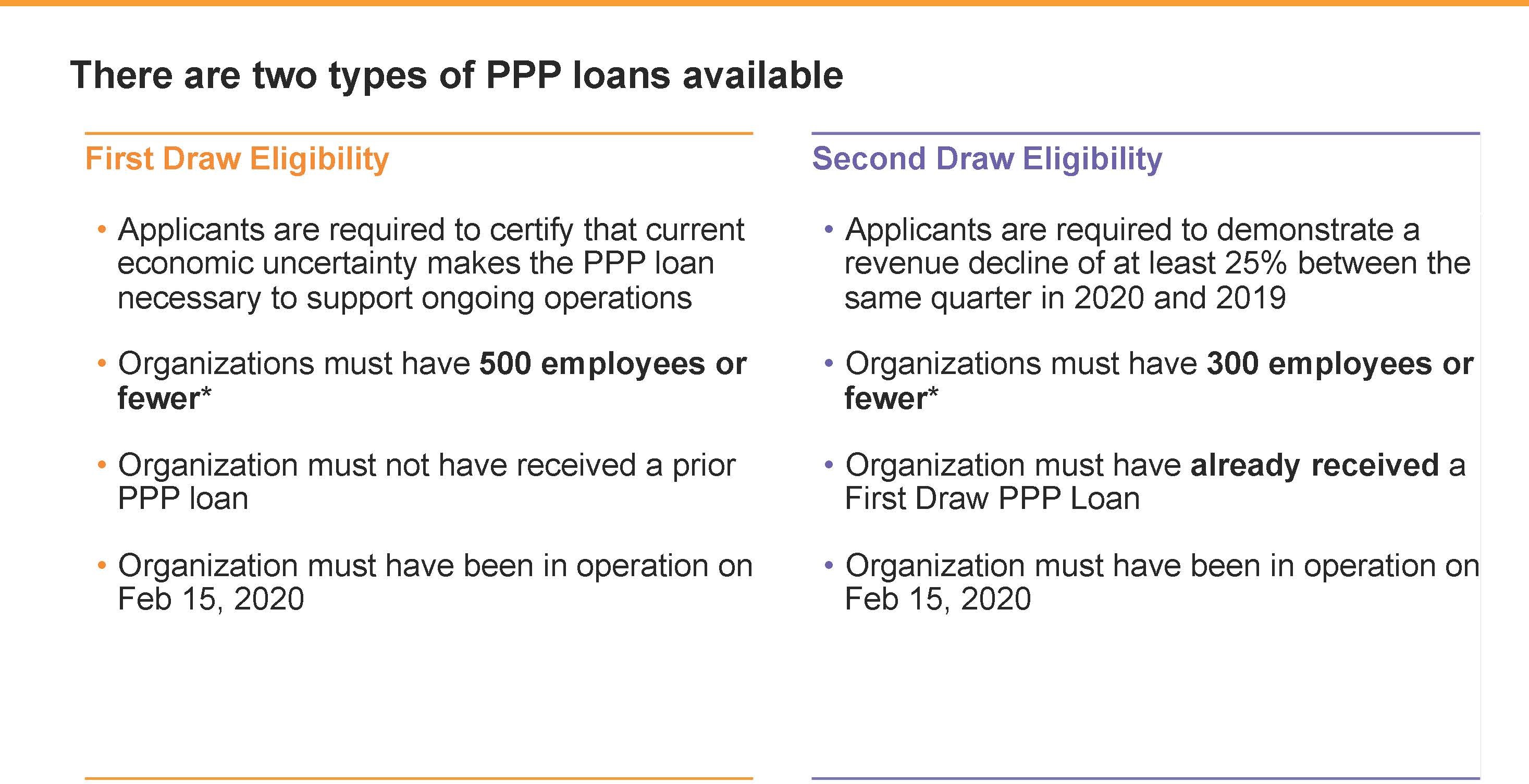
Calculating loan amounts
Loan amounts for both first and second draw PPP loans are based on payroll expenses. The slides below lay out how to use payroll expenses to calculate the loan amount your nonprofit should apply for. They also break down exactly which expenses can be covered by a PPP loan. The SBA website contains more information for how to calculate first draw and second draw loan amounts.
NB: Organizations working in accommodation and food services can apply for up to 3.5x their average monthly 2019 payroll.

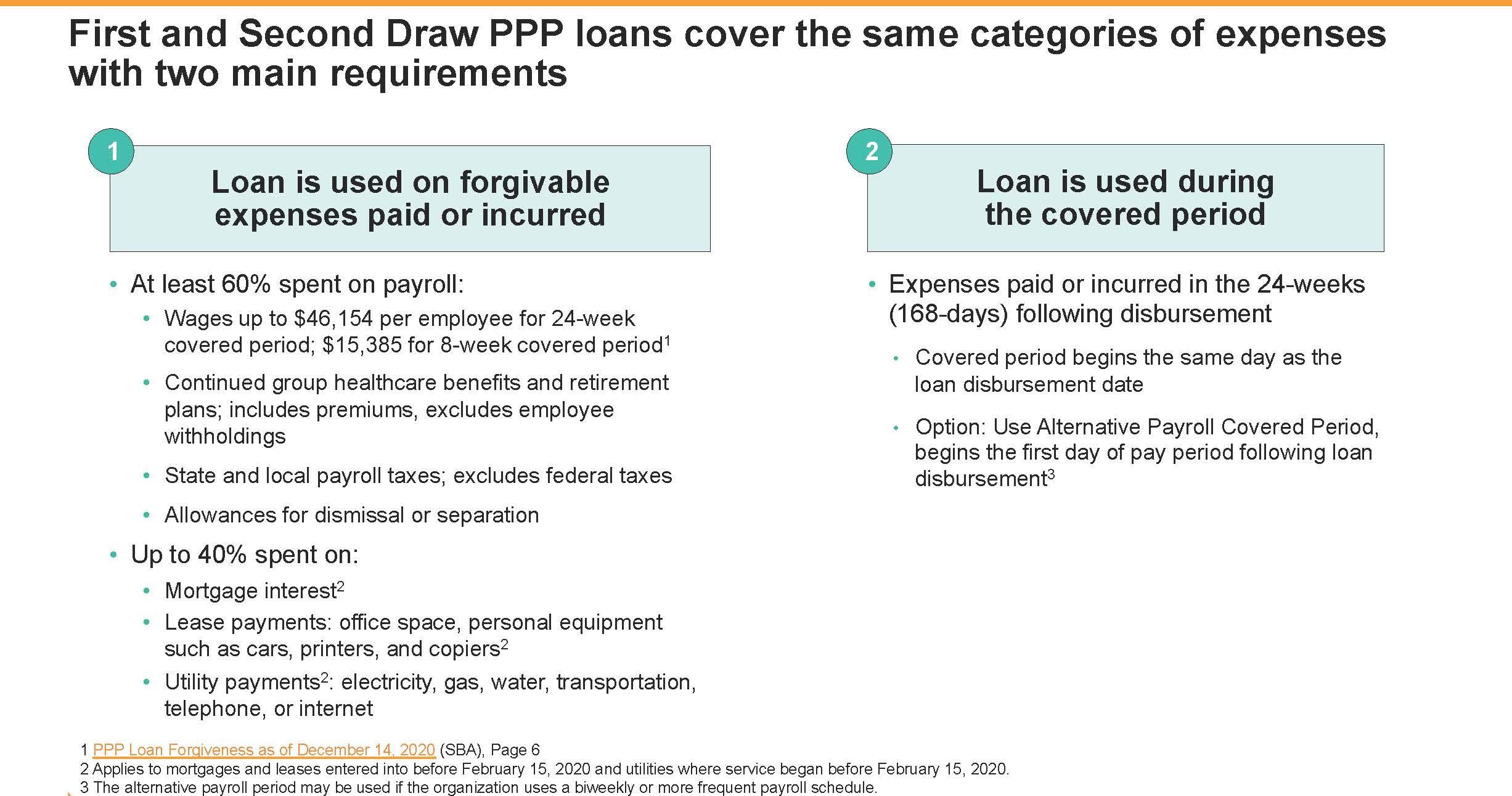
How to apply
Rather than applying directly to the SBA for a PPP loan, nonprofits apply for an SBA-backed loan directly from a bank or community development finance institution (CDFI). To find a lender near you that offers PPP loans, use this lender locator from SBA or this CDFI locator from the Opportunity Finance Network (filter “loan program” by PPP). While NFF offers various financing and consulting options to nonprofits, we are not a PPP lender.
The slides below summarize how nonprofits can apply to first or second draw loans. The page numbers refer to this "How to Calculate” document for first draw and second draw applicants. First draw borrowers should use this SBA form; second draw borrowers should use this one.
NB: Nonprofits do not have to fill out the “owners” section of the application.

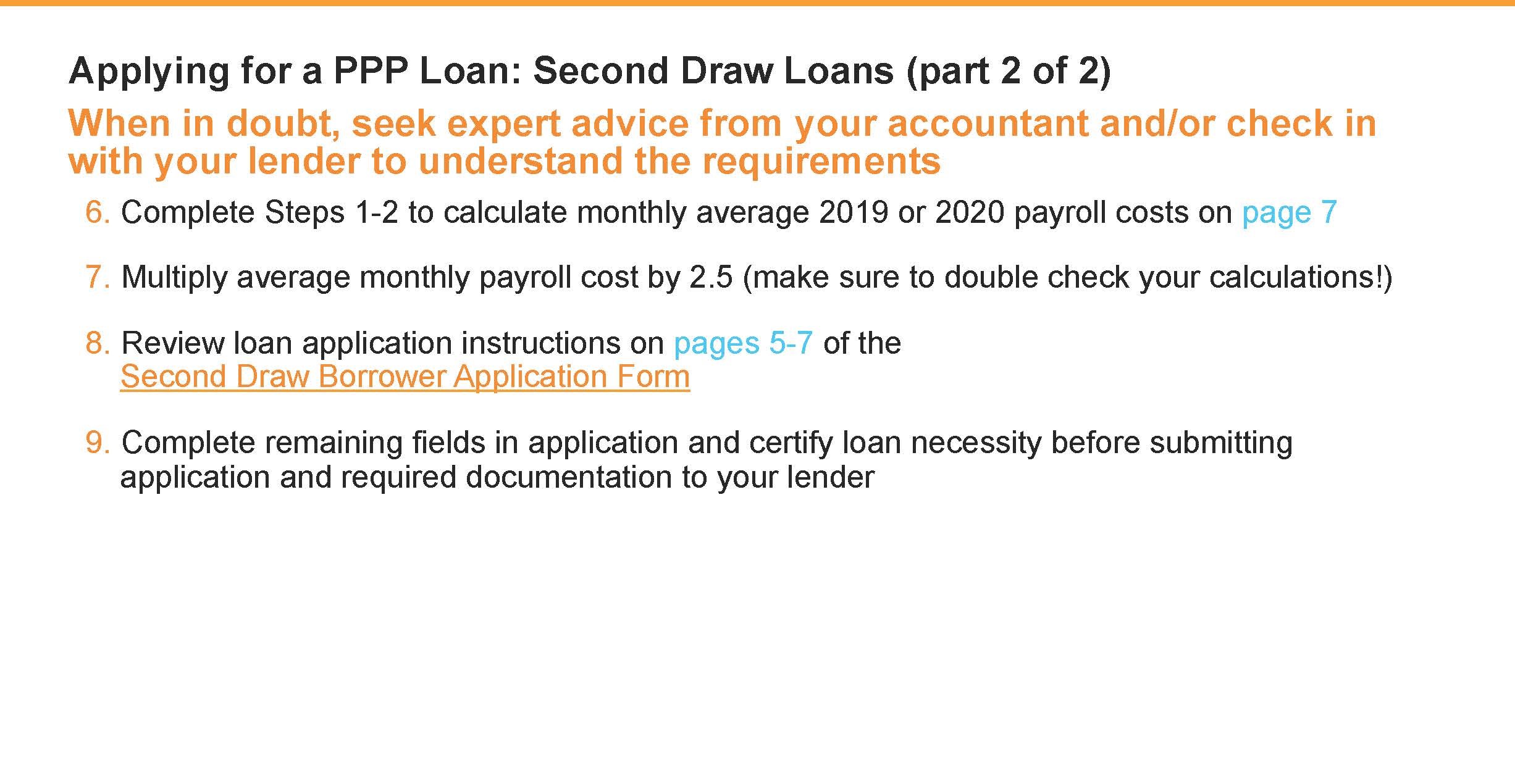

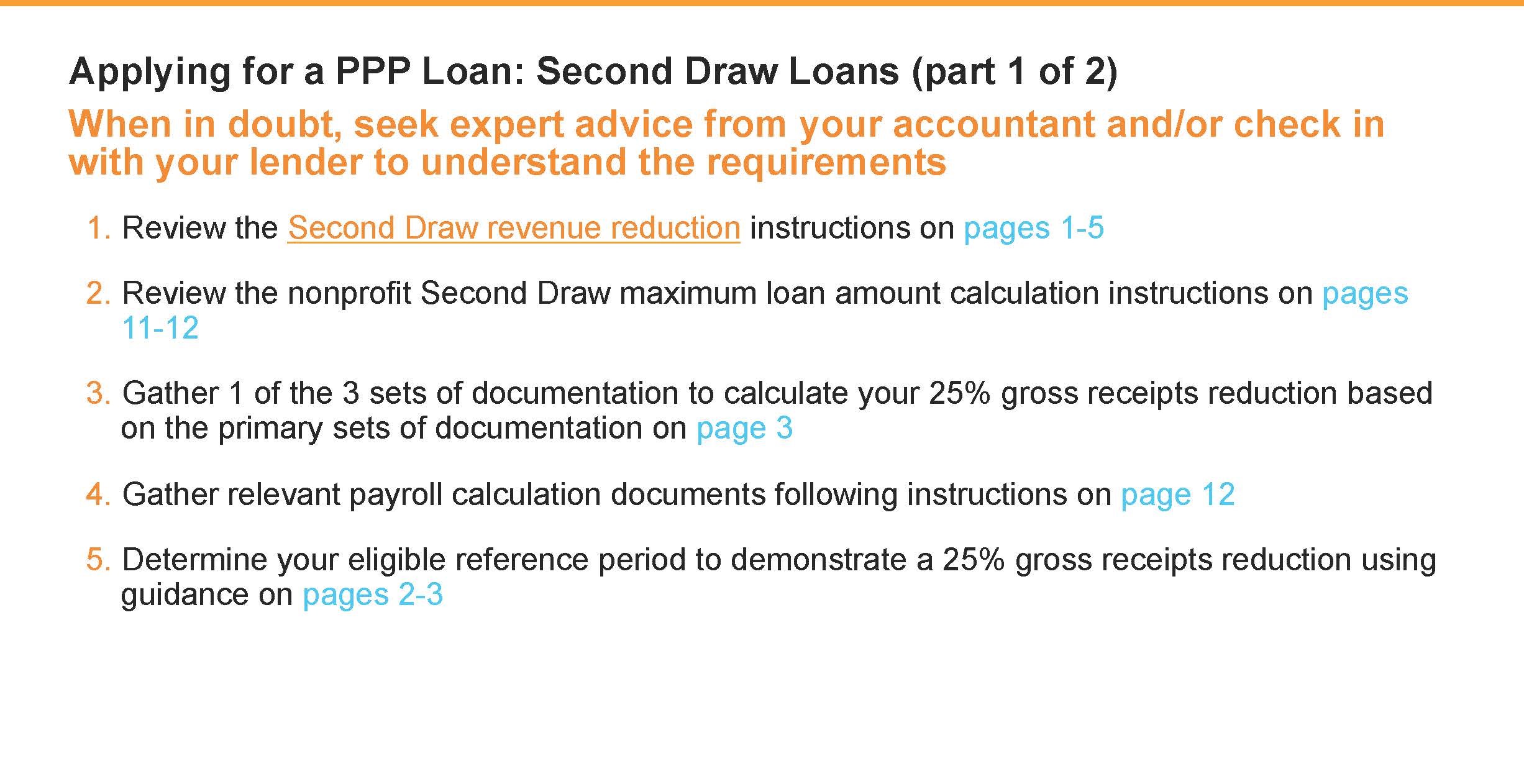
Gross receipts
Nonprofits applying for a second draw PPP loan must provide documentation of their gross receipts: all revenue received from all sources without subtracting associated costs or expenses (with a few exceptions). The slide below summarizes what should and should not be included when calculating gross receipts and lists acceptable forms of documentation.
Organizations need to compare either full figures for 2019 vs. 2020 or the same quarter from 2019 vs. 2020. They do not have to have reported losses in all four quarters. If they want to use numbers from the full year, they must use their 990s as documentation; if they use a quarter-to-quarter comparison, they should be sure that what they calculate is equivalent to what will be counted as gross receipts on their 990s. In addition, they should use calendar year quarters – even if their fiscal year runs on a different schedule.

Other federal programs for nonprofits
In addition to the PPP, the SBA offers two other COVID-19 economic relief programs: Economic Injury Disaster Loans (EIDL) and Shuttered Venues Operating Grants (SVOG).
While the PPP is designed specifically for nonprofits and businesses to keep employees on the payroll, the EIDL has a broader scope. It also comes with an emergency grant advance of up to $10,000. Nonprofits can apply for both EIDL and PPP loans – in fact, an EIDL loan can be refinanced into a PPP loan. You can learn more about the EIDL on SBA’s website. At the time of writing, the funding available for EIDL Advances had been spent down. The American Rescue Fund Act may have replenished this funding, but it is currently unclear whether advances will be made available again.
In contrast with PPP and EIDL, SVOG is a grant program. The program is designed specifically for venues, arts organizations, and other nonprofits who experienced revenue losses due to the pandemic. Nonprofits that lost 90% or more of their revenue between April and December 2020 will be prioritized first. Applications for this fund will open in April 2021; the latest information can be found on SBA’s website.
The American Rescue Fund Act appears to have removed the restrictions prohibiting nonprofits from applying for both PPP and SVOG funding. However, at the time of writing, the SBA had not yet confirmed whether this was the case. Currently, we cannot confirm whether nonprofits can receive both PPP and SVOG funding.
Outside of SBA programs, the IRS offers a tax credit to businesses that suspended operations and/or lost revenue due to COVID-19. More information on the Employee Retention Credit can be found below.


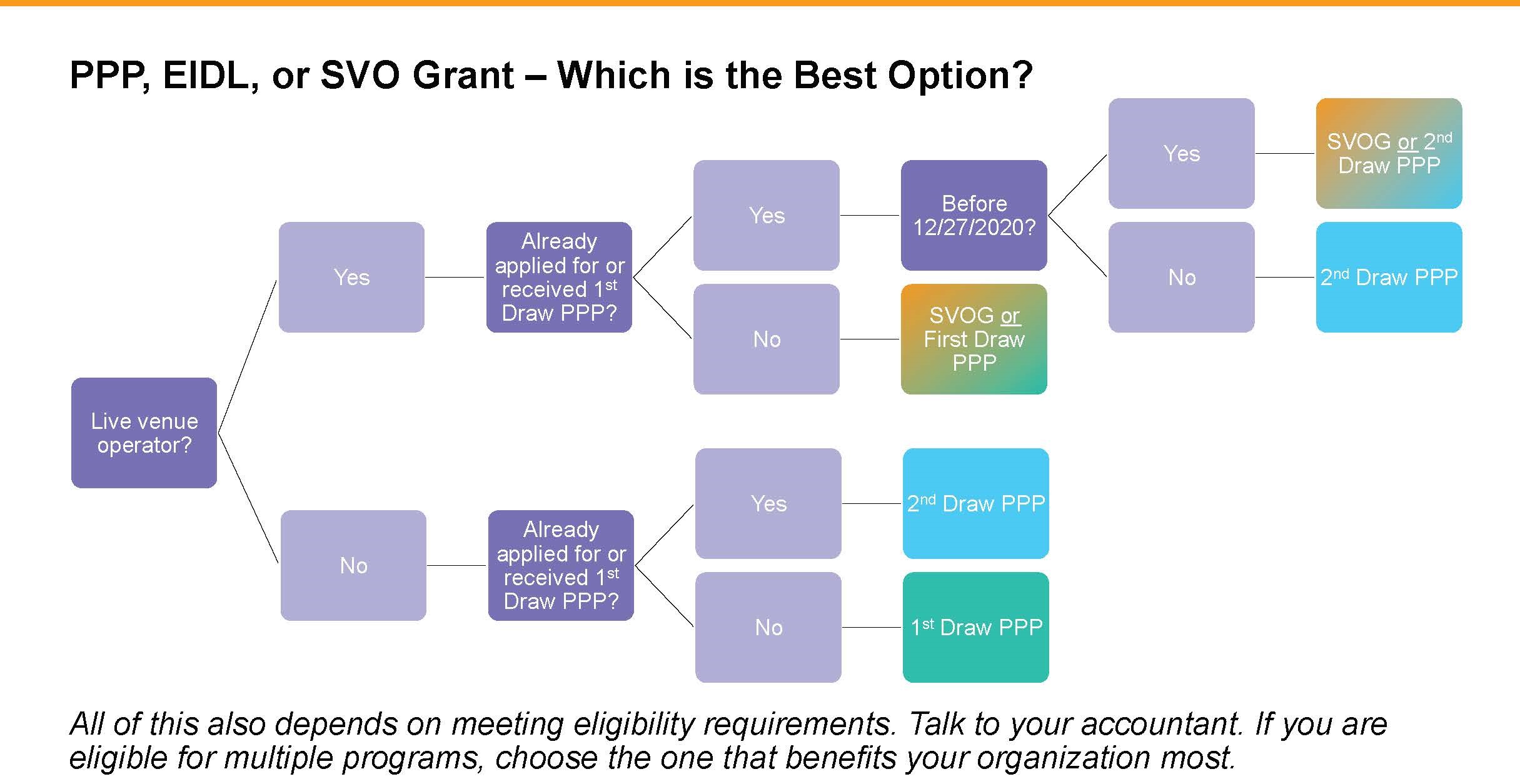
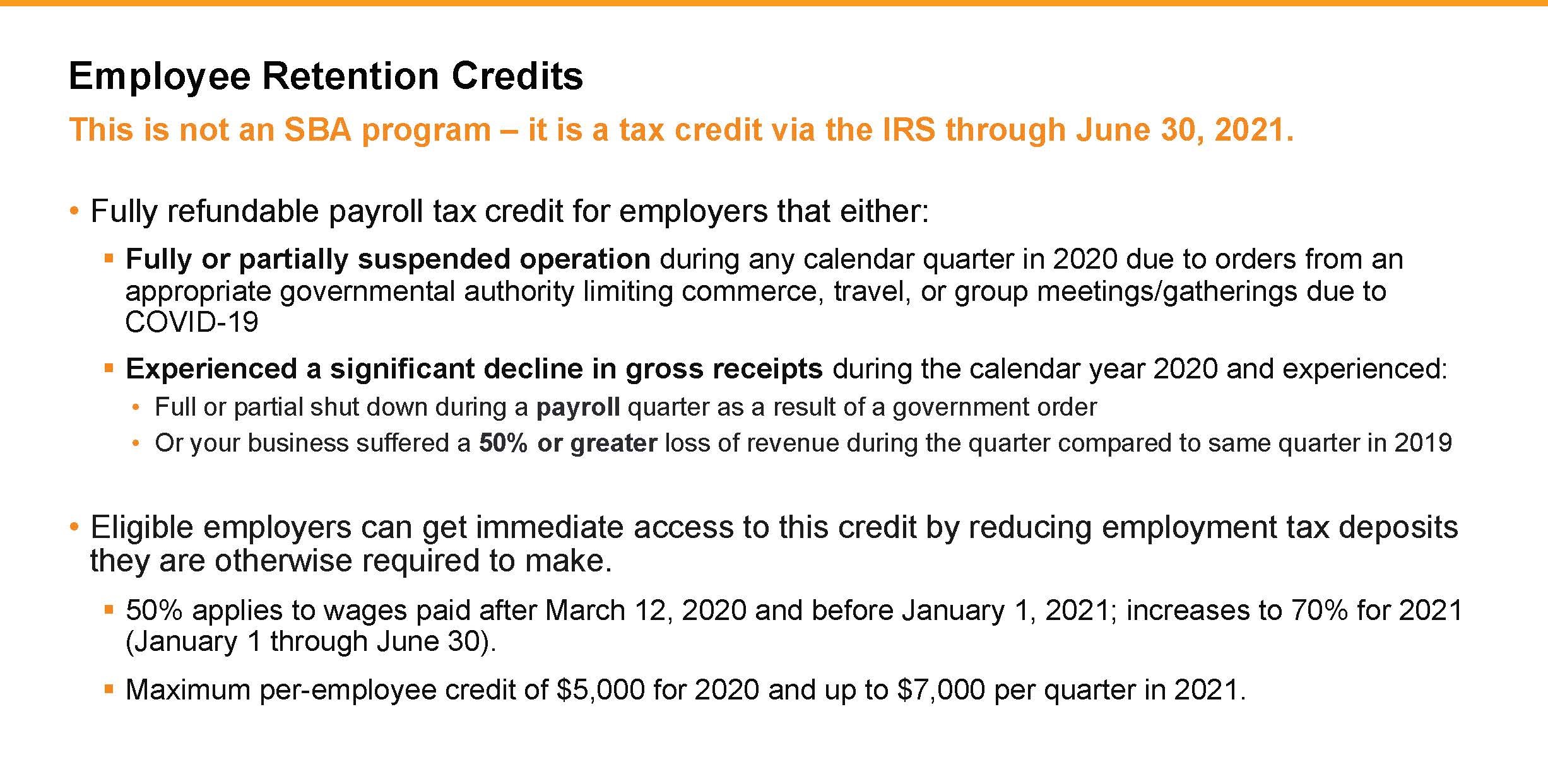
Forgiveness
Both first and second draw PPP loans will be forgiven by the SBA if:
Employee and compensation levels are maintained
The loan proceeds are spent on payroll costs and other eligible expenses; and
At least 60 percent of the proceeds are spent on payroll costs.
NFF’s webinar on loan forgiveness will review the criteria required for loan forgiveness and offer nonprofit employees the chance to ask questions about their particular situations. While we’re hosting the webinar on two dates, the content presented will be identical. Sign up for the April 7 webinar here and the April 19 webinar here.
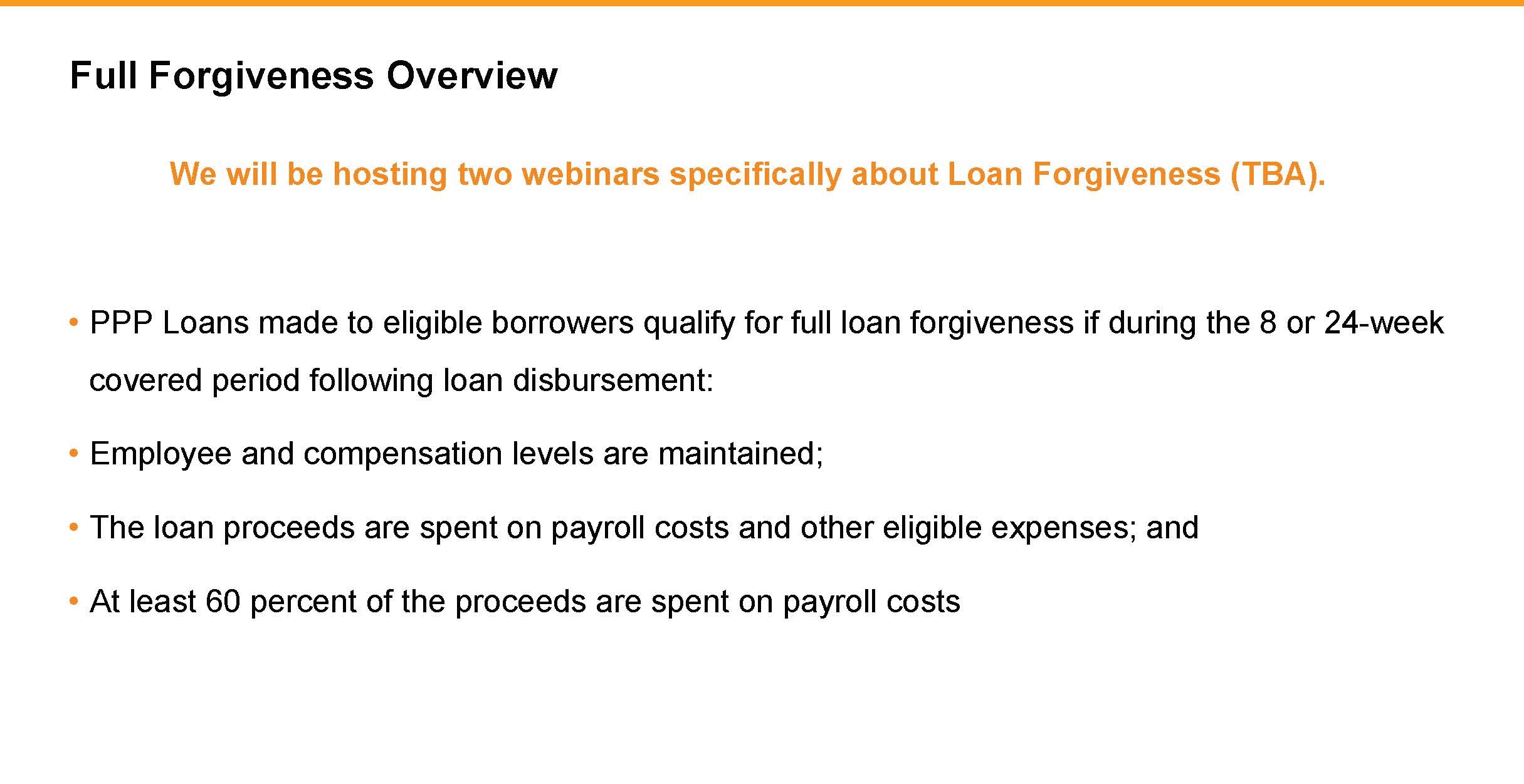
Other questions
Still have questions about the PPP or other government support for nonprofits? We’ve put together a list of the most frequently asked questions from the NFF community – and responded as best we could.
If your question isn’t covered in those FAQs or in this blog, get in touch with an NFF consultant by emailing [email protected].
Join over 24,000 social sector leaders who receive our latest insights and noteworthy stories throughout the year.
